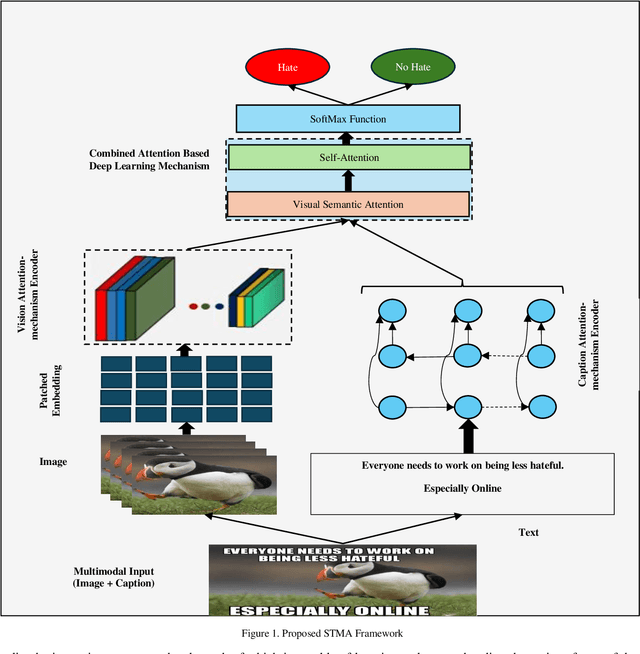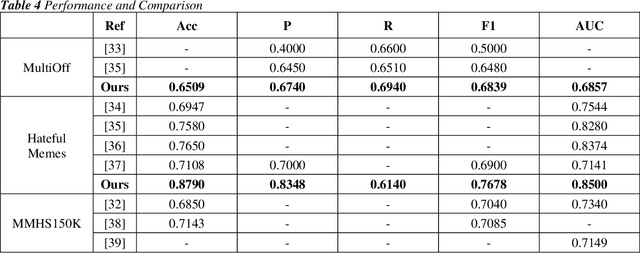MHS-STMA: Multimodal Hate Speech Detection via Scalable Transformer-Based Multilevel Attention Framework
Paper and Code
Sep 08, 2024



Social media has a significant impact on people's lives. Hate speech on social media has emerged as one of society's most serious issues recently. Text and pictures are two forms of multimodal data distributed within articles. Unimodal analysis has been the primary emphasis of earlier approaches. Additionally, when doing multimodal analysis, researchers neglect to preserve the distinctive qualities associated with each modality. The present article suggests a scalable architecture for multimodal hate content detection called transformer-based multilevel attention (STMA) to address these shortcomings. This architecture consists of three main parts: a combined attention-based deep learning mechanism, a vision attention mechanism encoder, and a caption attention-mechanism encoder. To identify hate content, each component uses various attention processes and uniquely handles multimodal data. Several studies employing multiple assessment criteria on three hate speech datasets: Hateful memes, MultiOff, and MMHS150K, validate the suggested architecture's efficacy. The outcomes demonstrate that on all three datasets, the suggested strategy performs better than the baseline approaches.
 Add to Chrome
Add to Chrome Add to Firefox
Add to Firefox Add to Edge
Add to Edge